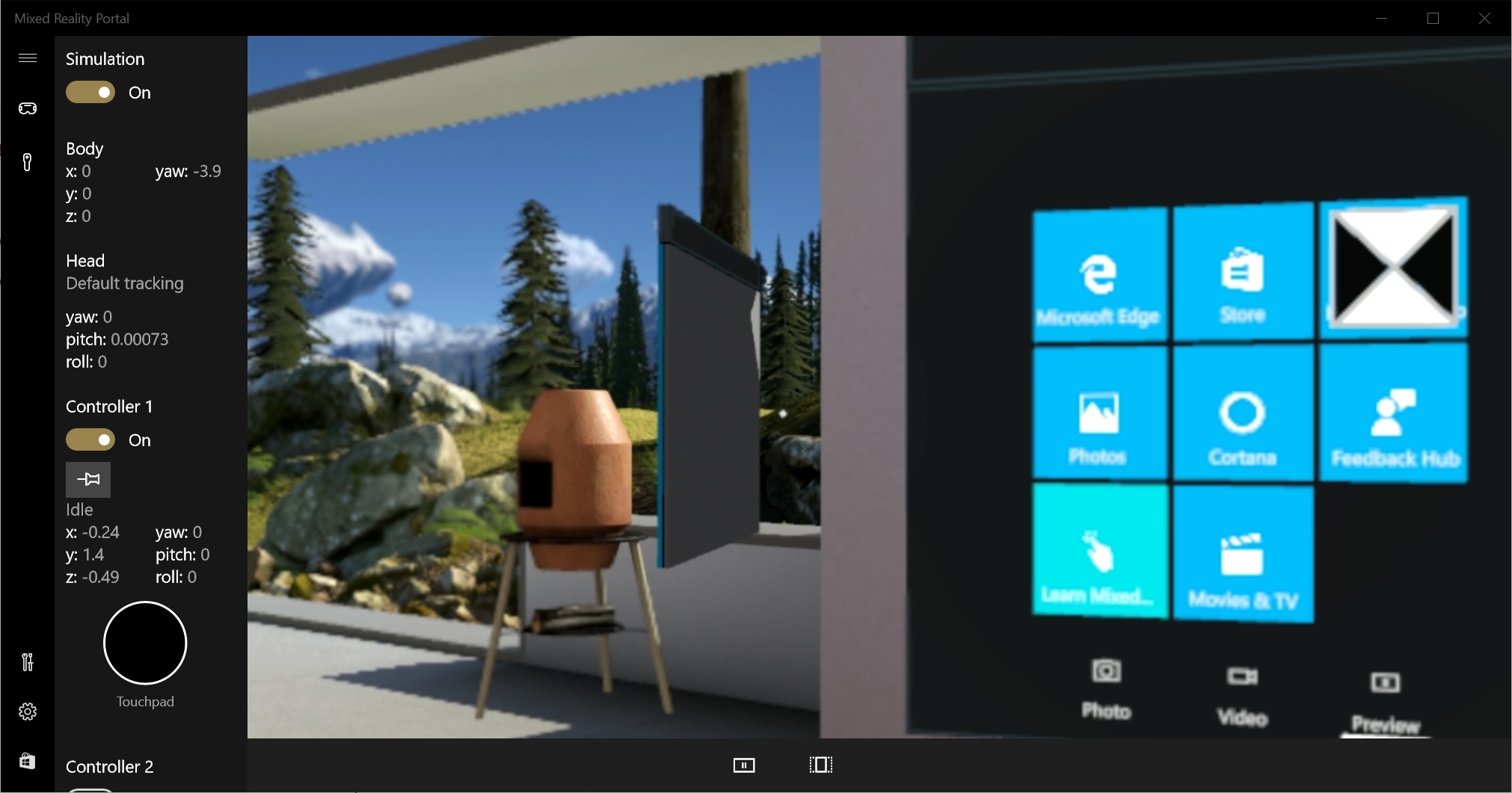Latest Windows 10 preview build brings Mixed Reality to Windows PCs

Mixed Reality is coming to Windows 10 PCs, and for those who would like to get a sense of what to expect, Microsoft has rolled out a new Windows 10 Insider Preview build, which includes a Mixed Reality Portal universal app.
Microsoft’s third party hardware partners, including HP, Lenovo and Dell, have already released headsets designed to work with Windows 10 mixed-reality software, with a price range that is surprisingly affordable for devices typically in the $600-$1000 range.
With that said, for those who have not jumped on the bandwagon, and would like to take a look at what the fuss is all about, the Mixed Reality Portal can be set in “Developer Mode”, to simulate the presence of a headset, which will result in the app displaying the virtual environment in a flat, 2-dimensional fashion, just like any other 3D videogame.
At this point, you may be one of those still wondering what Mixed Reality actually is, unless you have been keeping up with Microsoft’s development of HoloLens.
Mixed Reality is also known as “Augmented Reality”, which is a 3-dimensional, virtual simulation that overlays the viewer’s field of view.
By this token, a mixed reality headset will let you see the real world around you, while adding 3D objects in your field of view, that will interact, behave and appear as though they are really there.
The perfect example would be those Instagram filters that add cartoon features to your face, by tracking the movement of your facial features.
This type of technology is not unlike immersive virtual reality, however headsets that do not support mixed reality, like Oculus Rift of HTC Vive, will not work, yet, with Windows 10’s Mixed Reality Portal.
Mixed Reality, as mentioned earlier, requires the headset to be able to actually see the surrounding environment, by capturing it with stereoscopic cameras. These cameras allow the headset to, not only track the presence of objects around you, but also to create a 3D map of your surrounding environment, for 3D objects to exist.
For instance, Mixed Reality headsets and sensors allow you to place a virtual object like a coffee mug, on a real, physical surface, like a table, or a countertop, and knock the same virtual object off of it, when pushing it past the edge, which will result in the virtual object to collide with the floor.
Also, Mixed Reality allows for better tracking of your position in the virtual space, which means that you won’t bump into invisible obstacles.
Currently, virtual reality headsets use a “guardian system”, which renders a 3D grid around you, to let you know how far you can walk without hitting anything. Unfortunately, sensors aren’t always reliable, and can sometimes be off target, or temporarily unable to see your headset and controllers, which may result in a little disorientation. This is also another reason why Mixed Reality Portal won’t work with opaque virtual reality headsets.
Microsoft’s development of Mixed Reality is very much active, and the Mixed Reality Portal is expected to be included in the upcoming Windows 10 Creators Update.
Ready to shop?
Looking for the most powerful gaming laptops? PortableOne is where you can get ASUS ROG Series laptops, the most powerful and lightweight VR-ready gaming laptops in their category